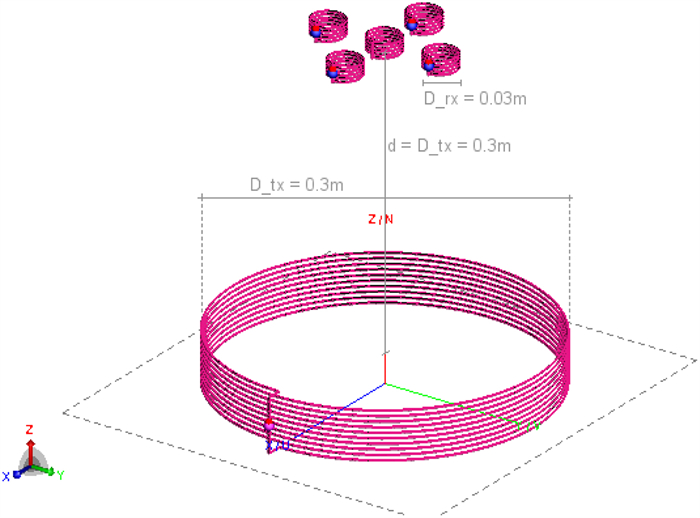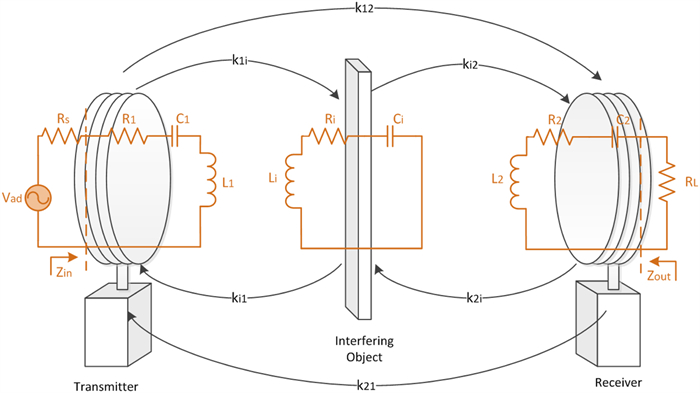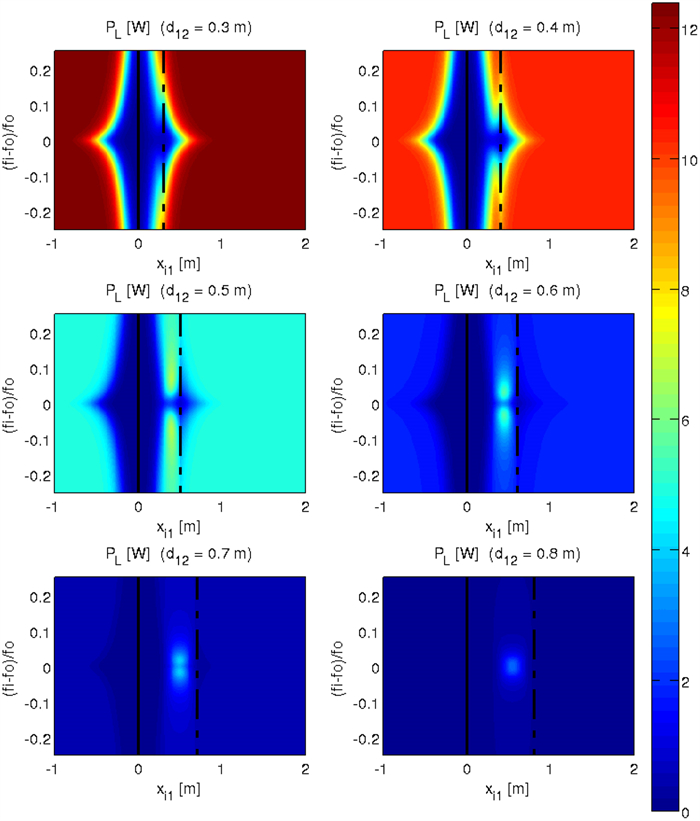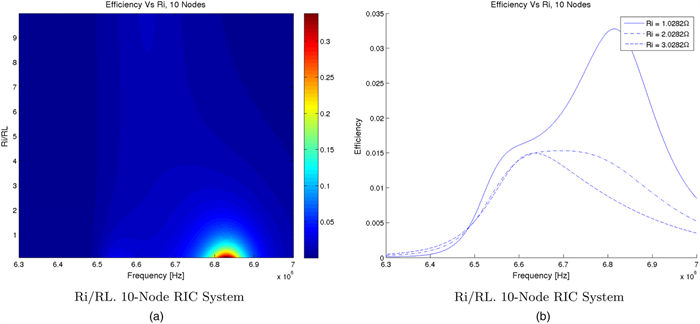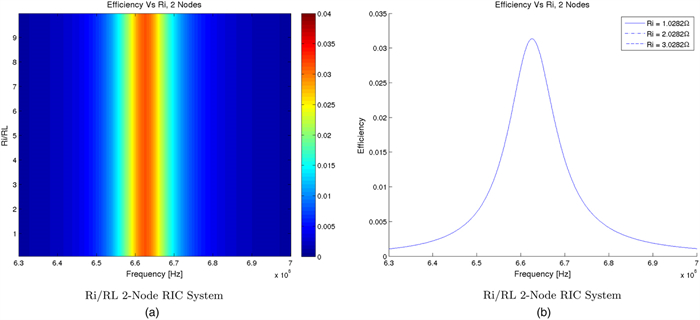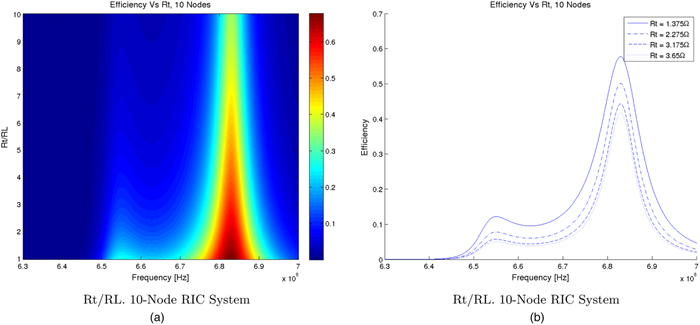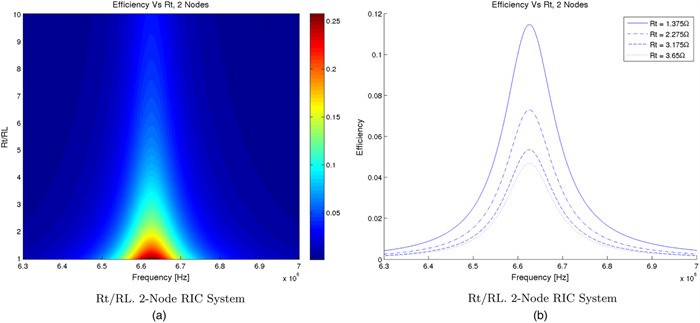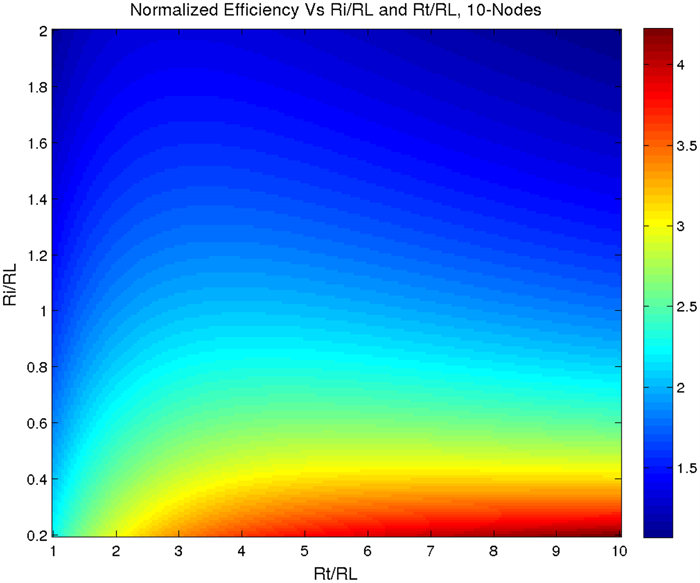Multipath relaying effects in multiple-node resonant inductive coupling wireless power transfer
-
1.
Electronic Engineering Department, UPC BarcelonaTech, Barcelona, Spain
-
2.
Aerospace Engineering Department, University of Maryland, Maryland, USA
-
3.
Physics Department, Massachusetts Institute of Technology, Boston, USA
More Information
-
Author Bio:
 E. Bou-Balust
E. Bou-Balust received the M.Sc. degree in Telecommunications Engineering from Technical University of Catalonia (UPC) in 2011 and the M.Sc. in Electronic Engineering from the University of Las Palmas de Gran Canaria (ULPGC) in 2011. Since 2012 she has been a Ph.D. candidate at Technical University of Catalonia on Resonant Inductive Coupling Wireless Power Transfer Systems. Bou was a recipient of two Vodafone Scholarships (2008 and 2009), a research grant issued by Thales Alenia Space Spain (2012–2016) on Wireless Energy Transfer for satellite constellations and a Google Faculty Research Award (2013) on Android Phone-Based Nano-Satellites. Bou collaborates with the UMD Aerospace Engineering Department and the MIT Aeronautics and Astronautics Department on Space Applications of Resonant Inductive Coupling WPT. She serves as a reviewer for the IEEE IAS, IEEE MWSCAS, IEEE IMS, and IEEE BIOCAS amongst others and co-organized special sessions related to wireless energy transfer at IEEE ISCAS (2013, 2014) and PIERS (2013, 2014).
 Raymond J. Sedwick
Raymond J. Sedwick is an Associate Professor of Aerospace Engineering and Director of the Space Power and Propulsion Laboratory at the University of Maryland where he has been since Fall of 2007. He is also recognized as a Keystone Professor within the A. James Clark School of Engineering and is the Director of the Aerospace Engineering Honors Program. Dr. Sedwick's current research includes orbital debris remediation, RF plasma generation for space propulsion, plasma-assisted combustion and catalyzed decomposition, ion plume material impact damage, and novel fusion confinement for space and terrestrial power applications. His research interests include a variety of in-space power generation and propulsion technologies, with particular interest in nuclear systems and the applications of plasmas. Dr. Sedwick was the inaugural recipient of the Bepi Colombo Prize, as well as the recipient of an NSF CAREER award on the development of compact helicon sources. He is an Associate Fellow of the AIAA, an Associate Editor of the AIAA Journal of Spacecraft and Rockets, and serves on the AIAA Nuclear and Future Flight Technical Committee. Dr. Sedwick received a BS in Aerospace Engineering from Penn State University in 1992, and an M.S. and Ph.D. from the MIT Department of Aeronautics and Astronautics in 1994 and 1997.
 P. H. Fisher
P. H. Fisher is a Professor in the Physics Department and currently serves as department head at the Massachusetts Institute of Technology. He carries out research in particle physics in the areas of dark matter detection and the development of new kinds of particle detectors. He also has an interest in compact energy supplies and wireless energy transmission. Professor Fisher received a B.S. Engineering Physics from Berkeley in 1983 and a Ph.D. in Nuclear Physics from Caltech in 1988.
 E. Alarcon
E. Alarcon received the M. Sc. (National award) and Ph.D. degrees (honors) in Electrical Engineering from the Technical University of Catalunya (UPC BarcelonaTech), Spain, in 1995 and 2000, respectively. Since 1995 he has been with the Department of Electronic Engineering at UPC, where he became Associate Professor in 2000. From August 2003 to January 2004, July–August 2006 and July–August 2010 he was a Visiting Professor at the CoPEC center, University of Colorado at Boulder, USA, and during January–June 2011 he was Visiting Professor at the School of ICT/Integrated Devices and Circuits, Royal Institute of Technology (KTH), Stockholm, Sweden. He has co-authored more than 250 scientific publications, four books, four book chapters and four patents, and has been involved in different National, European and US (DARPA, NSF) R & D projects within his research interests including the areas of on-chip energy management circuits, energy harvesting, wireless energy transfer, and nanotechnology-enabled wireless communications. He is the PI of the Guardian Angels EU FET flagship project at UPC and through N3CAT center he is part of the graphene flagship. He has given 25 invited or plenary lectures and tutorials in Europe, America and Asia, was appointed by the IEEE CAS society as distinguished lecturer for 2009–2010 and lectures yearly MEAD courses at EPFL. He has participated in Evaluation Boards for research proposals both in Europe (Chist-ERA, Belgium, Ireland, Italy) America (Canada) and Asia (Korea). He is elected member of the IEEE CAS Board of Governors (2010–2013) and member of the IEEE CAS long-term strategy committee
-
Corresponding author:
E. Bou-Balust Email: elisenda.bou@upc.edu
-
Abstract
Resonant Inductive Coupling Wireless Power Transfer (RIC-WPT)is a key technology to provide an efficient wireless power channel to consumer electronics, biomedical implants and wireless sensor networks. Due to its non radiative nature, RIC Wireless Power Transfer has been considered safe for humans when adhered to magnetic health radiation safety regulations (Christ et al., 2013), unveiling a large range of potential applications in which this technology could be used. However, current deployments are limited to point-to-point links and do not explore the capabilities of Multi-Node RIC-WPT Systems. In such a system, the multi-path relaying effect between different nodes could effectively improve the performance of the link in terms of power transferred to the load and power transfer efficiency. However, depending on the impedance and resonant frequency of the nodes that generate the multi-path effect, these nodes could also act as interfering objects, therefore (a) making the transmitter and/or receiver act as a pass-band filter and (b) losing part of the transmitter magnetic field through coupling to the interfering node. In this paper, a circuit-based analytical model that predicts the behavior of a Multi-Node Resonant Inductive Coupling link is proposed and used to perform a design-space exploration of the multi-path relaying effect in RIC Wireless Power Transfer Systems.
-
About this article
Cite this article
Bou-Balust E, Sedwick R, Fisher P, Alarcon E. 2016. Multipath relaying effects in multiple-node resonant inductive coupling wireless power transfer. Wireless Power Transfer 3(2): 83-92 doi: 10.1017/wpt.2016.5
|
Bou-Balust E, Sedwick R, Fisher P, Alarcon E. 2016. Multipath relaying effects in multiple-node resonant inductive coupling wireless power transfer. Wireless Power Transfer 3(2): 83-92 doi: 10.1017/wpt.2016.5
|


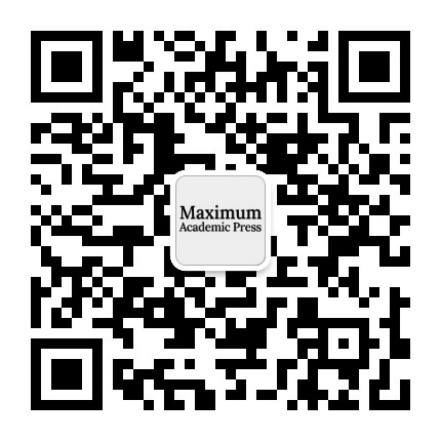







 E. Bou-Balust received the M.Sc. degree in Telecommunications Engineering from Technical University of Catalonia (UPC) in 2011 and the M.Sc. in Electronic Engineering from the University of Las Palmas de Gran Canaria (ULPGC) in 2011. Since 2012 she has been a Ph.D. candidate at Technical University of Catalonia on Resonant Inductive Coupling Wireless Power Transfer Systems. Bou was a recipient of two Vodafone Scholarships (2008 and 2009), a research grant issued by Thales Alenia Space Spain (2012–2016) on Wireless Energy Transfer for satellite constellations and a Google Faculty Research Award (2013) on Android Phone-Based Nano-Satellites. Bou collaborates with the UMD Aerospace Engineering Department and the MIT Aeronautics and Astronautics Department on Space Applications of Resonant Inductive Coupling WPT. She serves as a reviewer for the IEEE IAS, IEEE MWSCAS, IEEE IMS, and IEEE BIOCAS amongst others and co-organized special sessions related to wireless energy transfer at IEEE ISCAS (2013, 2014) and PIERS (2013, 2014).
E. Bou-Balust received the M.Sc. degree in Telecommunications Engineering from Technical University of Catalonia (UPC) in 2011 and the M.Sc. in Electronic Engineering from the University of Las Palmas de Gran Canaria (ULPGC) in 2011. Since 2012 she has been a Ph.D. candidate at Technical University of Catalonia on Resonant Inductive Coupling Wireless Power Transfer Systems. Bou was a recipient of two Vodafone Scholarships (2008 and 2009), a research grant issued by Thales Alenia Space Spain (2012–2016) on Wireless Energy Transfer for satellite constellations and a Google Faculty Research Award (2013) on Android Phone-Based Nano-Satellites. Bou collaborates with the UMD Aerospace Engineering Department and the MIT Aeronautics and Astronautics Department on Space Applications of Resonant Inductive Coupling WPT. She serves as a reviewer for the IEEE IAS, IEEE MWSCAS, IEEE IMS, and IEEE BIOCAS amongst others and co-organized special sessions related to wireless energy transfer at IEEE ISCAS (2013, 2014) and PIERS (2013, 2014).  Raymond J. Sedwick is an Associate Professor of Aerospace Engineering and Director of the Space Power and Propulsion Laboratory at the University of Maryland where he has been since Fall of 2007. He is also recognized as a Keystone Professor within the A. James Clark School of Engineering and is the Director of the Aerospace Engineering Honors Program. Dr. Sedwick's current research includes orbital debris remediation, RF plasma generation for space propulsion, plasma-assisted combustion and catalyzed decomposition, ion plume material impact damage, and novel fusion confinement for space and terrestrial power applications. His research interests include a variety of in-space power generation and propulsion technologies, with particular interest in nuclear systems and the applications of plasmas. Dr. Sedwick was the inaugural recipient of the Bepi Colombo Prize, as well as the recipient of an NSF CAREER award on the development of compact helicon sources. He is an Associate Fellow of the AIAA, an Associate Editor of the AIAA Journal of Spacecraft and Rockets, and serves on the AIAA Nuclear and Future Flight Technical Committee. Dr. Sedwick received a BS in Aerospace Engineering from Penn State University in 1992, and an M.S. and Ph.D. from the MIT Department of Aeronautics and Astronautics in 1994 and 1997.
Raymond J. Sedwick is an Associate Professor of Aerospace Engineering and Director of the Space Power and Propulsion Laboratory at the University of Maryland where he has been since Fall of 2007. He is also recognized as a Keystone Professor within the A. James Clark School of Engineering and is the Director of the Aerospace Engineering Honors Program. Dr. Sedwick's current research includes orbital debris remediation, RF plasma generation for space propulsion, plasma-assisted combustion and catalyzed decomposition, ion plume material impact damage, and novel fusion confinement for space and terrestrial power applications. His research interests include a variety of in-space power generation and propulsion technologies, with particular interest in nuclear systems and the applications of plasmas. Dr. Sedwick was the inaugural recipient of the Bepi Colombo Prize, as well as the recipient of an NSF CAREER award on the development of compact helicon sources. He is an Associate Fellow of the AIAA, an Associate Editor of the AIAA Journal of Spacecraft and Rockets, and serves on the AIAA Nuclear and Future Flight Technical Committee. Dr. Sedwick received a BS in Aerospace Engineering from Penn State University in 1992, and an M.S. and Ph.D. from the MIT Department of Aeronautics and Astronautics in 1994 and 1997.  P. H. Fisher is a Professor in the Physics Department and currently serves as department head at the Massachusetts Institute of Technology. He carries out research in particle physics in the areas of dark matter detection and the development of new kinds of particle detectors. He also has an interest in compact energy supplies and wireless energy transmission. Professor Fisher received a B.S. Engineering Physics from Berkeley in 1983 and a Ph.D. in Nuclear Physics from Caltech in 1988.
P. H. Fisher is a Professor in the Physics Department and currently serves as department head at the Massachusetts Institute of Technology. He carries out research in particle physics in the areas of dark matter detection and the development of new kinds of particle detectors. He also has an interest in compact energy supplies and wireless energy transmission. Professor Fisher received a B.S. Engineering Physics from Berkeley in 1983 and a Ph.D. in Nuclear Physics from Caltech in 1988.  E. Alarcon received the M. Sc. (National award) and Ph.D. degrees (honors) in Electrical Engineering from the Technical University of Catalunya (UPC BarcelonaTech), Spain, in 1995 and 2000, respectively. Since 1995 he has been with the Department of Electronic Engineering at UPC, where he became Associate Professor in 2000. From August 2003 to January 2004, July–August 2006 and July–August 2010 he was a Visiting Professor at the CoPEC center, University of Colorado at Boulder, USA, and during January–June 2011 he was Visiting Professor at the School of ICT/Integrated Devices and Circuits, Royal Institute of Technology (KTH), Stockholm, Sweden. He has co-authored more than 250 scientific publications, four books, four book chapters and four patents, and has been involved in different National, European and US (DARPA, NSF) R & D projects within his research interests including the areas of on-chip energy management circuits, energy harvesting, wireless energy transfer, and nanotechnology-enabled wireless communications. He is the PI of the Guardian Angels EU FET flagship project at UPC and through N3CAT center he is part of the graphene flagship. He has given 25 invited or plenary lectures and tutorials in Europe, America and Asia, was appointed by the IEEE CAS society as distinguished lecturer for 2009–2010 and lectures yearly MEAD courses at EPFL. He has participated in Evaluation Boards for research proposals both in Europe (Chist-ERA, Belgium, Ireland, Italy) America (Canada) and Asia (Korea). He is elected member of the IEEE CAS Board of Governors (2010–2013) and member of the IEEE CAS long-term strategy committee
E. Alarcon received the M. Sc. (National award) and Ph.D. degrees (honors) in Electrical Engineering from the Technical University of Catalunya (UPC BarcelonaTech), Spain, in 1995 and 2000, respectively. Since 1995 he has been with the Department of Electronic Engineering at UPC, where he became Associate Professor in 2000. From August 2003 to January 2004, July–August 2006 and July–August 2010 he was a Visiting Professor at the CoPEC center, University of Colorado at Boulder, USA, and during January–June 2011 he was Visiting Professor at the School of ICT/Integrated Devices and Circuits, Royal Institute of Technology (KTH), Stockholm, Sweden. He has co-authored more than 250 scientific publications, four books, four book chapters and four patents, and has been involved in different National, European and US (DARPA, NSF) R & D projects within his research interests including the areas of on-chip energy management circuits, energy harvesting, wireless energy transfer, and nanotechnology-enabled wireless communications. He is the PI of the Guardian Angels EU FET flagship project at UPC and through N3CAT center he is part of the graphene flagship. He has given 25 invited or plenary lectures and tutorials in Europe, America and Asia, was appointed by the IEEE CAS society as distinguished lecturer for 2009–2010 and lectures yearly MEAD courses at EPFL. He has participated in Evaluation Boards for research proposals both in Europe (Chist-ERA, Belgium, Ireland, Italy) America (Canada) and Asia (Korea). He is elected member of the IEEE CAS Board of Governors (2010–2013) and member of the IEEE CAS long-term strategy committee 


